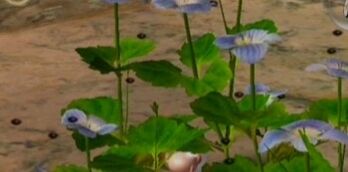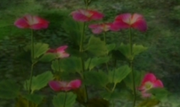(Adding categories) |
m (Reverted edits by Spongefan15 (Talk); to last version by Jackninja5DipperGravityFalls) |
||
| (9 intermediate revisions by 6 users not shown) | |||
| Line 1: | Line 1: | ||
| + | {{Head |
||
| ⚫ | |||
| + | | type = Species |
||
| + | | quote = |
||
| + | | speaker = |
||
| + | | stub = |
||
| + | | class = |
||
| + | }} |
||
| + | [[File:Figwort Insects.jpg|thumb|348px|Figwort insects]] |
||
| ⚫ | '''Figworts''' are plants in ''[[Pikmin (video game)|Pikmin]]'' and ''[[Pikmin 2]]'' for the [[Nintendo GameCube]]. Unlike most other plants, these actually effect gameplay a little bit. [[Unmarked Spectralids]] and [[Doodle Bug]]s hide in these. Also in ''Pikmin'', when you walk near it, bugs come out and swarm it, they are dubbed "''figwort insects"''. They are also found on clovers. They can be different colors depending on where they grow. One Figwort can be found in the stage [[Distant Planet]] in [[Super Smash Bros. Brawl]] for the [[Wii]]. |
||
| + | |||
==Notes== |
==Notes== |
||
| + | [[File:Figwort.png|thumb]] |
||
| − | ===Olimar's |
+ | ===Olimar's notes=== |
''"This plant offers an excellent example of a non-native species introduced into the ecosystem by some unknown method. Upon introduction, it quickly established a foothold and adapted to the new habitat. This plant's distinct flowers usually exhibit a stunning blue color in early spring, but recent fieldwork has recorded specimens displaying a deep red hue. Although this may represent a sudden deviation in genetics of the species, the red coloration is much more likely an anomaly. Additional readings suggest no significant atmospheric or solar radiation changes have occurred in the ecosystem, leaving open the possibility that soil composition and mineral deposits may have affected petal coloration."'' |
''"This plant offers an excellent example of a non-native species introduced into the ecosystem by some unknown method. Upon introduction, it quickly established a foothold and adapted to the new habitat. This plant's distinct flowers usually exhibit a stunning blue color in early spring, but recent fieldwork has recorded specimens displaying a deep red hue. Although this may represent a sudden deviation in genetics of the species, the red coloration is much more likely an anomaly. Additional readings suggest no significant atmospheric or solar radiation changes have occurred in the ecosystem, leaving open the possibility that soil composition and mineral deposits may have affected petal coloration."'' |
||
| + | |||
| − | ===Louie's |
+ | ===Louie's notes=== |
''"This titillating ingredient tastes impossibly fresh, but you must cook it immediately after picking. If you don't, it'll go bad within minutes!"'' |
''"This titillating ingredient tastes impossibly fresh, but you must cook it immediately after picking. If you don't, it'll go bad within minutes!"'' |
||
[[Category:Pikmin plants]] |
[[Category:Pikmin plants]] |
||
Latest revision as of 18:45, 17 October 2016
|

Figwort insects
Figworts are plants in Pikmin and Pikmin 2 for the Nintendo GameCube. Unlike most other plants, these actually effect gameplay a little bit. Unmarked Spectralids and Doodle Bugs hide in these. Also in Pikmin, when you walk near it, bugs come out and swarm it, they are dubbed "figwort insects". They are also found on clovers. They can be different colors depending on where they grow. One Figwort can be found in the stage Distant Planet in Super Smash Bros. Brawl for the Wii.
Notes

Olimar's notes
"This plant offers an excellent example of a non-native species introduced into the ecosystem by some unknown method. Upon introduction, it quickly established a foothold and adapted to the new habitat. This plant's distinct flowers usually exhibit a stunning blue color in early spring, but recent fieldwork has recorded specimens displaying a deep red hue. Although this may represent a sudden deviation in genetics of the species, the red coloration is much more likely an anomaly. Additional readings suggest no significant atmospheric or solar radiation changes have occurred in the ecosystem, leaving open the possibility that soil composition and mineral deposits may have affected petal coloration."
Louie's notes
"This titillating ingredient tastes impossibly fresh, but you must cook it immediately after picking. If you don't, it'll go bad within minutes!"
